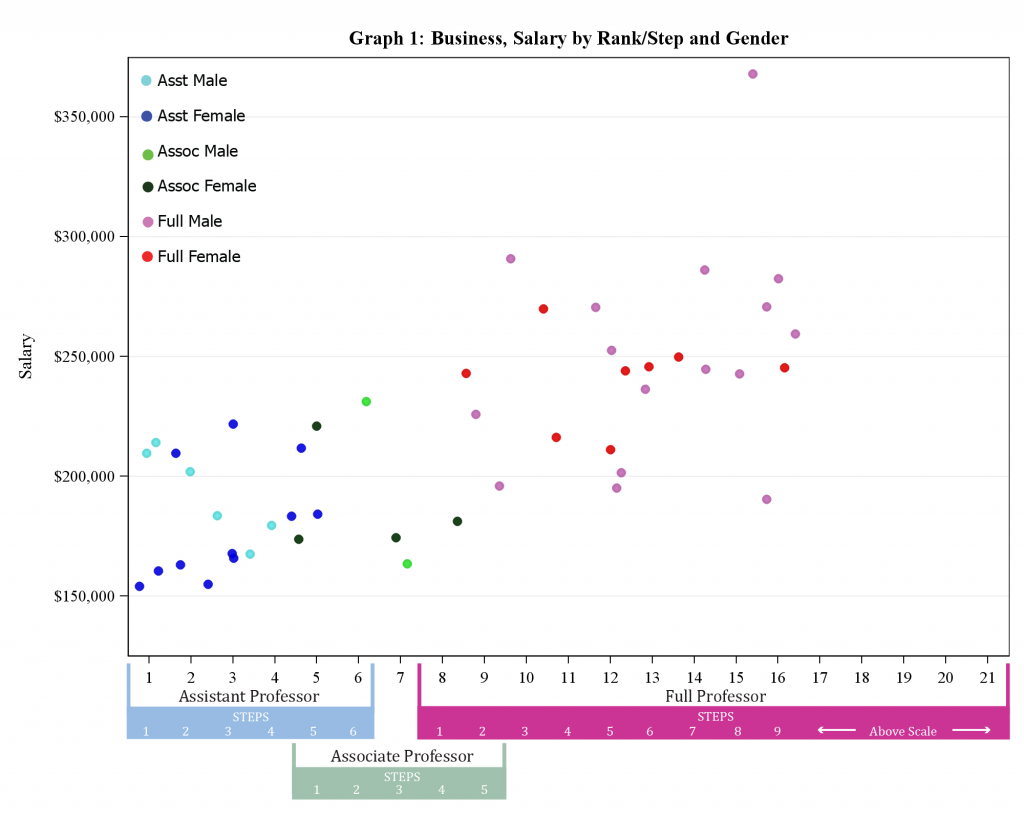Ladder Rank Salary Data
The salary data for all Ladder Rank Faculty in The Paul Merage School of Business are plotted below.
As a function of rank, step, and gender:

As a function of rank, step, and gender:

Multiple Linear Regression Analysis
Multiple regression analysis of salary vs rank/step. As indicated in Table 1, the simplest model with only demographic variables shows that relative to white male faculty, women earn salaries that are 11% lower, Asian faculty earn 5% and URM faculty earn 15% less. Only 17% of salary variation is explained by this model. After all control factors are added, 70% of salary variation is explained by a model with demographic, experience, field, and rank variables. After adjusting for covariates, relative to white male faculty, salaries are 1% higher for faculty who are women, 0.1% lower for Asian, and 17% lower for URM faculty. In this model, URM faculty earn significantly less than their white male counterparts. However it is worth noting that there were only three URM faculty in the School of Business.

Progression Analysis
The progression data for all Business Ladder Rank Faculty, are plotted below. Normative progression is defined in the Progression Matrix.
Progress by gender:

Progress by ethnicity:

Progress Rate Analysis
Using a simple t-test, the results indicate that there is no statistically significant difference in progression rate means by gender when compared to white male faculty. However, URM faculty progress at a rate that is 1 year faster than white males (p = .033). Normative progression is defined in the Progression Matrix.
